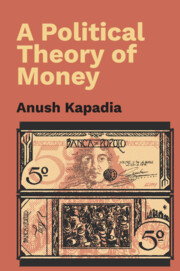5 - Between Currency and Credit: Mehrling's Money View
Published online by Cambridge University Press: 14 September 2023
Summary
The state owns some part of each one of us, but we also own some part of it and, through its intermediation, some part of one another.
—Mehrling (2000a)Monetary systems are clearly hierarchical, but why? One answer comes from Chartalism: the state has sovereignty and can therefore impose itself on the monetary system. We have already seen why this is a very limited answer based on a too-thin reading of the politics of accepting credit. We will explore these limitations further through a close reading of Ingham's work in the next chapter. We have also seen earlier that a residual Chartalism can be paired quite consistently with the Banking School in terms of a ‘fiat’ or legal-tender understanding of outside money, ‘currency’ that then comes to be deployed within a system of inside money complete with its own creditary dynamics, namely ‘inherent instability’.
Mehrling gestures towards a non-Chartalist account of hierarchy. He seems uncomfortable with the Banking School's residual Chartalism without fully abandoning it. In line with Banking School practice, Mehrling brackets the ontology of outside money to focus on the economists’ level of abstraction, the evolution and control of credit system dynamics, rather than the ontology of money. He develops the difference between money and credit into a unique vision of hierarchy stitched together by market-making, but he does not say why money is better than credit. ‘Credit’ points to the system's unstable but endogenous elasticity while ‘money’ refers to the discipline of the survival constraint.
Yet Mehrling makes an initial step towards a political theory of money by rendering politics and the state within the logic of balance sheets to defeat the argument from fiat and coercion. This enables us to see different types of social bonding, economic versus political, leading to more or less money-like liabilities. This then opens up a pathway to a non-Chartalist account of hierarchy and heterogeneity in money.
As we saw in Chapter 4, the Banking School does not really need to have a complete theory of the ontology of money: all it has to assert is that there is some qualitatively distinct ‘currency’ which originates outside the credit circle (that is, not the liability of an ‘internal’ operator) which ‘credit’ is a promise to pay.
- Type
- Chapter
- Information
- A Political Theory of Money , pp. 84 - 103Publisher: Cambridge University PressPrint publication year: 2024



